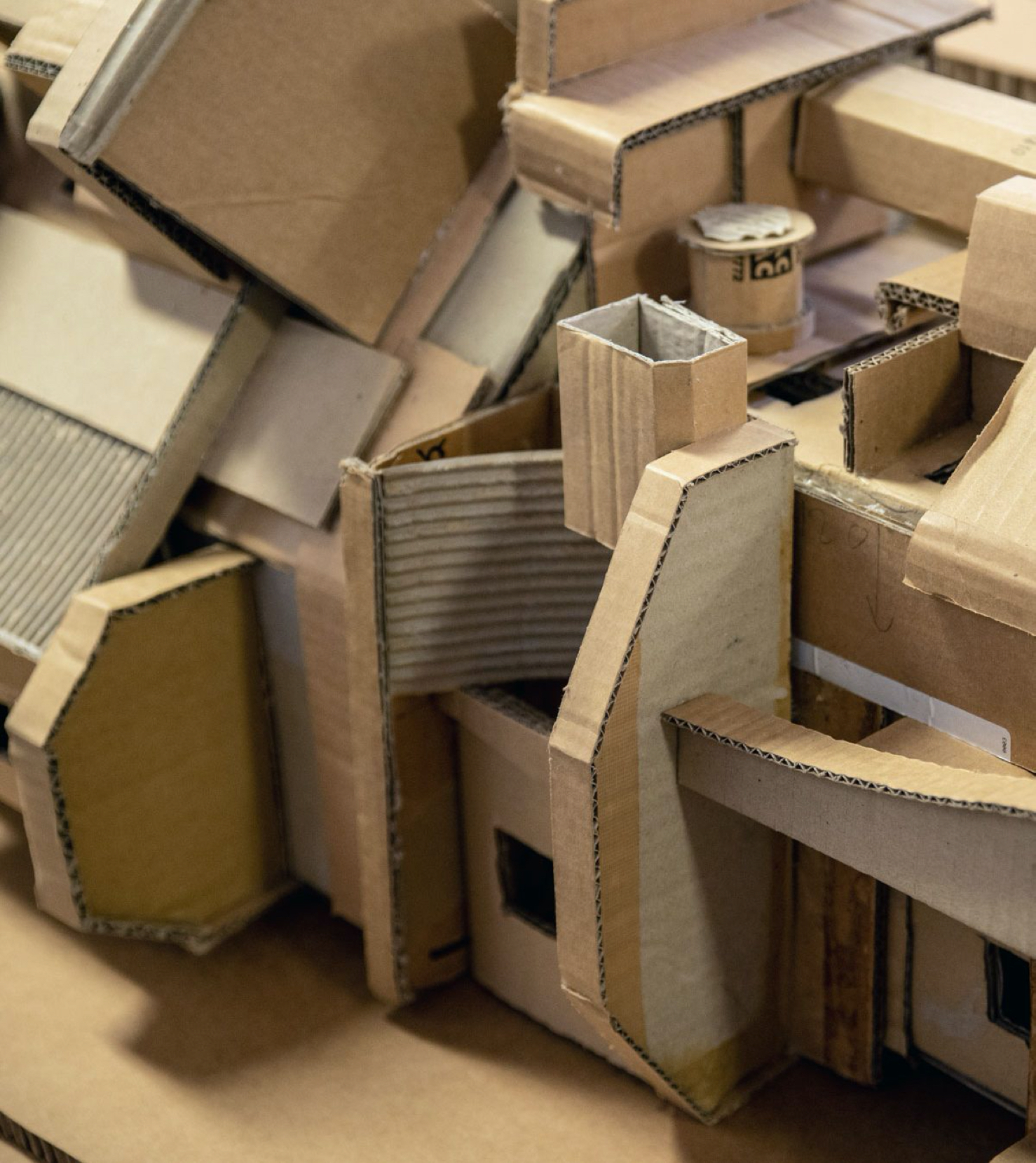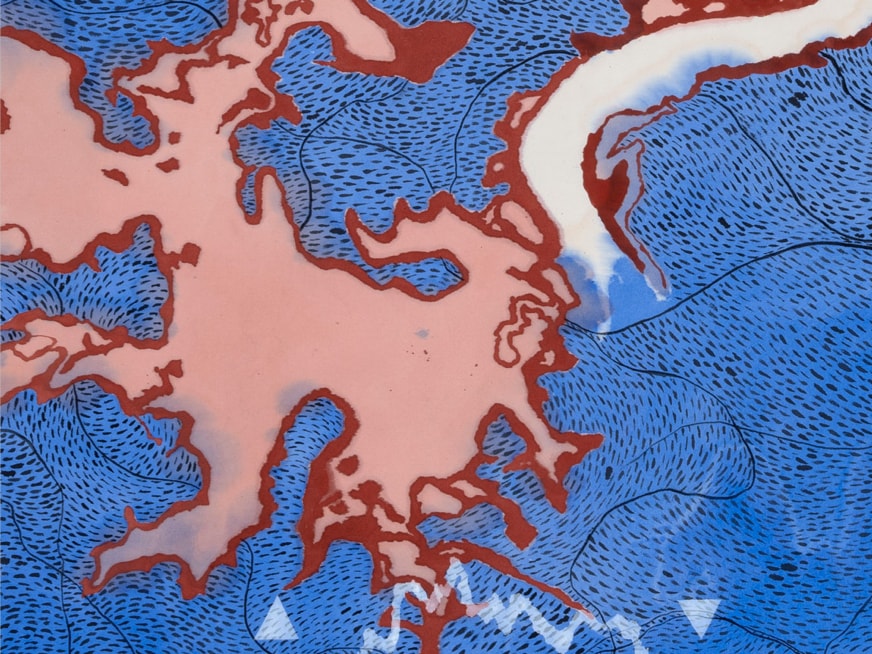Alfredo and Isabel Aquilizan are partners in both art and life. Exploring themes of migration, family and cultural displacement, the Filipino-born artists create mixed media works out of collected and reassembled materials, which often involve public participation. Touring regional centres in Australia, their exhibition In-Habit: Project Another Country invites local communities to fill the gallery with self-made cardboard houses, resulting in a makeshift and evergrowing village within the space.
In 2006, Alfredo and Isabel decamped with their five children from the Philippines to Australia, after the couple featured in the Biennale of Sydney. Since then, assemblage has become a symbol of the changing nature of their migrating environment.
Anchored by ideas of co-creation and the collective spirit, Alfredo and Isabel facilitate projects that forge relationships through shared experiences. Their strategy of accumulating and rearranging physical objects and narratives is heightened by their collaboration with audiences to produce work that evokes communal experiences. For BRISBANE ART DESIGN: OPEN SOURCE the artists presented ‘Prototypes’ After In-Habit: Project Another Country, which centred on individuals, histories and belongings, as well as the artists’ personal stories and dreams. By collecting accounts of displacement, and transforming these through meticulous reorganisation, Alfredo and Isabel intend for their projects to build, gather and dissect collective memories with new hopes for the future. This project is a collaboration with the Fruitjuice Factory Studio, the artists’ studio in the Philippines.
Alfredo and Isabel have exhibited around the world, including the Singapore Biennale, The Drawing Room in Manila, the Venice Biennale and The Asia-Pacific Triennial of Contemporary Art at the Queensland Art Gallery | Gallery of Modern Art (QAGOMA), Brisbane.
Your home country, the Philippines, has one of the largest diasporic communities in the world. In this time of global migration and displacement, what is your idea of home?
Our idea of home is that ‘space in between’. Once you leave your homeland, you don’t have a place you call home anymore. If we go back to the Philippines, we feel that we are like locals, but we’re not locals anymore. In the same way, when we leave to go back to Australia, we become foreigners. We call this middle space a ‘doble vista’, or double vision, where we start to see things differently. Our view of the physical and non-physical becomes more vivid and meaningful; the mundane and the nondescript become more interesting and conspicuous; the boring becomes exciting. It’s a stimulating, yet challenging place to be. The space in between becomes our comfort zone.
It sounds like your collaborations have expanded into a family business. What’s it like to work with your five children?
We’ve been working together [as a family] since the kids were growing up, and now that they’re on their own, it’s a conscious effort to come together and create things. It’s interesting because they have their own way of working, and each one does a different thing: film, photography, fashion, jewellery, sculpture, painting and so on. Our projects all over the world become an opportunity for us to make something together. Artmaking becomes the catalyst to nourish and rekindle relationships.

The Brisbane community has contributed to your project through cardboard assemblage workshops. Do you encourage community input because, while this is your story, it could be other people’s stories as well?
Yes, we do like to engage communities to get involved and become active participants, not just passive viewers, because the shared experience of making becomes part of the work’s meaning. Also, by actually involving them in the process of creation, you demystify the idea that art is not solely an individual pursuit, but a collective one.

We’ve all used cardboard at some point, to move house or store possessions. What significance does cardboard have for you?
The ‘Balikbayan Box’ has always played a major role in the lives of Filipinos, especially for those who have left home, or who constantly go back and forth to their homeland. This box serves as a tool to send to our loved ones a range of things, like groceries, bric-a-brac or mementos—anything that, in a way, still connects us to our families back home. Sadly, at the same time, it’s a signal that we’re not coming home or cannot come home. And for decades, this has been the practice of Filipinos who have chosen to go somewhere—and that includes us. The significance of cardboard as a material in most of our work is that each one has the history of travel already, and this becomes part of the work’s meaning. It’s also a strategy for us to engage with people as it’s an unassuming material: if you give cardboard to a three-year-old or a 73-year old, they’ll just go for it and make something out of it. This everyday banal object becomes an easy material to create things that will convey the stories of individuals who will engage. And when all these stories are put together, they create layers of narrative: of a place, of its people, and the community that has been part of the creation of the work.
As collaborative artists, what does an open source ethos mean to you?
For us, open source means creating and working together in a non-hierarchical way. Every individual is welcome to be part of the creation of an artwork. The engagement with the site, space, materials and our audience, becomes an intrinsic ingredient in its creation and meaning. Coming from south-east Asia, the idea of egalitarianism is a norm in that every individual is interdependent on one another. Forming situations for everyone to take part in making an artwork becomes a catch basin to collect narratives and diverse ideas. These will later become memories of what has transpired in the making of the work—for us, this is the most important part of the creation of the work.








